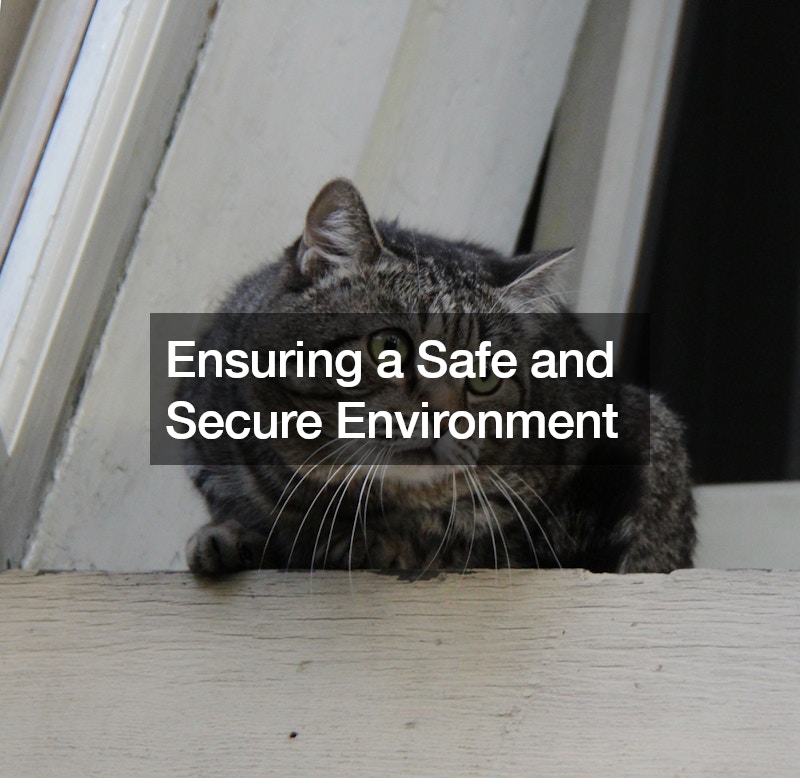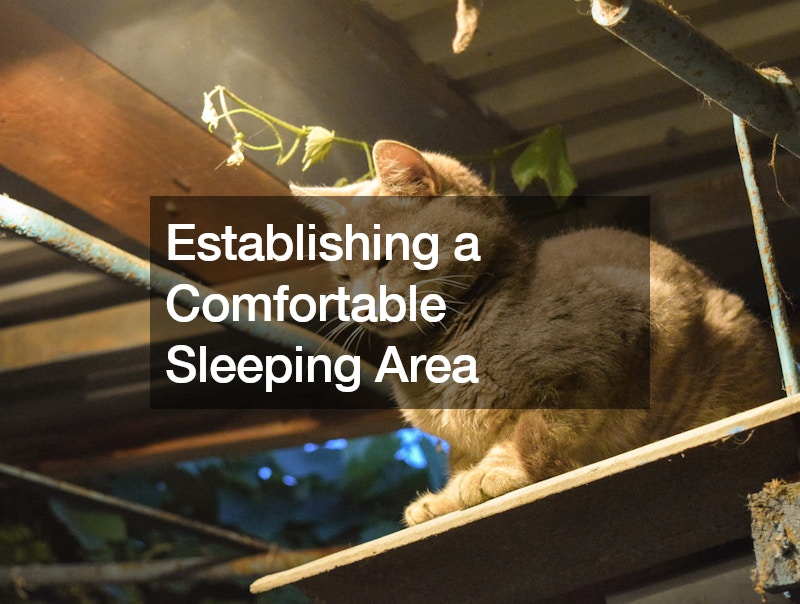Re-Introduction To Pet Care
Bringing new pets into your home is an exciting and rewarding experience, but it also comes with a responsibility to ensure they are comfortable and well-adjusted. The initial days and weeks are critical for establishing a strong bond and making your pets feel secure in their new environment. This period can be overwhelming as you navigate the best ways to meet their needs and create a welcoming space. Understanding the steps you can take to ease their transition will not only benefit your new pets but also set the stage for a harmonious relationship for years to come. Whether you are a first-time pet owner or adding to your furry family, these guidelines will help you provide the best start for your new companions.

Ensuring a Safe and Secure Environment
Creating a safe and secure environment is crucial for helping your new pets feel at ease. Start by pet-proofing your home to eliminate any potential hazards. Secure loose wires, remove toxic plants, and ensure that small objects are out of reach. Designate a specific area for your pets to retreat to if they feel overwhelmed. This can be a quiet room or a cozy corner with their bed and favorite toys. Providing a consistent and calm environment helps reduce anxiety and allows your new pets to explore their new surroundings at their own pace.
Specifically, consider using local ceramic coating for areas where your pets will spend a lot of time. This type of coating can make surfaces easier to clean and more resistant to scratches and stains, contributing to a safer environment. For instance, applying ceramic coating to floors can protect against damage from claws and reduce the risk of your pets ingesting harmful substances from the floor. This practical step not only ensures the longevity of your home’s surfaces but also maintains a clean and safe space for your new pets to enjoy.
Providing Proper Nutrition
Proper nutrition is foundational for the health and well-being of your new pets. Start by researching the dietary needs specific to your pet’s species, age, and health conditions. Consult with a veterinarian to determine the best type of food and feeding schedule. Ensure that fresh water is always available, and consider incorporating a mix of wet and dry food to meet their nutritional requirements. Understanding portion sizes and avoiding overfeeding is essential to prevent obesity and other health issues. A balanced diet will support your pets’ growth, energy levels, and overall health.
For more specialized advice, consider consulting a painting expert who can provide tips on maintaining clean feeding areas. Properly painted and sealed feeding zones are easier to clean and less likely to harbor bacteria that can affect your pets’ health. A painting expert can recommend the best finishes and materials for areas where food and water bowls are kept, ensuring that these spaces remain hygienic and safe for your new pets. This attention to detail in maintaining a clean feeding environment can significantly contribute to your pets’ comfort and well-being.

Establishing a Comfortable Sleeping Area
A comfortable sleeping area is vital for your new pets to rest and feel secure. Choose a quiet location in your home where they can relax without being disturbed by household traffic. Provide a bed that is appropriately sized and designed for your pet’s species and age. For example, a soft, cushioned bed is perfect for a dog or cat, while a cage with nesting material is suitable for smaller animals like hamsters or birds. Consistency is key, so keep their sleeping area in the same spot to help them feel more secure.
In addition to comfort, consider the practicality of the sleeping area. If your home has a sprinkler system, ensure that the sleeping area is away from any sprinkler heads. Sprinkler repair professionals can help you adjust your system if necessary, to ensure that your new pets’ sleeping space remains dry and comfortable. Avoid placing their bed near drafty windows or doors to maintain a stable temperature. By thoughtfully setting up a comfortable and practical sleeping area, you can help your new pets feel more at home and secure.
Gradually Introducing Your Home
Introducing your new pets to your home should be a gradual process to prevent overwhelming them. Start by allowing them access to one room where they can explore and get comfortable. As they become more confident, slowly introduce them to other areas of the house. Keep a close eye on their reactions and be patient, giving them plenty of time to adjust. Use positive reinforcement such as treats and praise to encourage them as they explore new spaces.
If you are planning to make home improvements, such as building a new deck, consider how these changes might affect your pets. Consulting with a local deck builder can help you design a pet-friendly space. For instance, a deck with a secure railing can provide a safe outdoor area for your pets to enjoy fresh air without the risk of them wandering off. Incorporating pet-friendly features in your home improvements ensures that your new pets feel comfortable and secure both indoors and outdoors.

Understanding and Meeting Exercise Needs
Exercise is essential for the physical and mental health of your new pets. Different species and breeds have varying exercise needs, so it’s important to research what is appropriate for your specific pet. For dogs, regular walks and playtime are crucial, while cats may benefit from interactive toys and climbing structures. Small animals like rabbits or guinea pigs also require space to move around and explore. Providing sufficient exercise helps prevent boredom and behavioral issues, ensuring that your pets remain happy and healthy.
To safely meet the exercise needs of your new pets, consider installing an aluminum fence in your yard. This type of fencing provides a secure area where your pets can play and explore without the risk of escaping. Aluminum fences are durable and require minimal maintenance, making them a practical choice for pet owners. By creating a safe outdoor space, you can give your new pets the freedom to exercise and enjoy the outdoors while keeping them protected.
Scheduling Regular Veterinary Checkups
Regular veterinary checkups are essential to ensure your new pets remain healthy and happy. These visits help catch any potential health issues early and provide an opportunity to discuss your pets’ diet, behavior, and overall well-being with a professional. It’s important to establish a relationship with a trusted veterinarian who can offer tailored advice and support throughout your pets’ lives. Keeping up with vaccinations, dental care, and preventive treatments like flea and tick control is crucial for maintaining your pets’ health.
For convenient and consistent vet visits, consider partnering with a local lawn care company to maintain a safe and pest-free yard for your pets. Regular lawn care can reduce the presence of harmful insects and plants that could affect your pets’ health. A well-maintained yard provides a clean environment for your pets to play and relax, minimizing the risk of them bringing pests into the home. By taking care of both their health and their environment, you can ensure your new pets thrive in their new surroundings.
Offering Toys and Mental Stimulation
Mental stimulation is just as important as physical exercise for your new pets. Providing a variety of toys and engaging activities helps keep their minds active and prevents boredom. Choose toys that are appropriate for your pets’ size and species, and rotate them regularly to maintain interest. Puzzle feeders, interactive toys, and training exercises are great ways to challenge your pets mentally. This not only keeps them entertained but also strengthens the bond between you and your new companions.
To create a safe and stimulating play area, consider installing waterproof flooring. This type of flooring is durable and easy to clean, making it ideal for areas where your pets play and interact with their toys. Waterproof flooring can withstand spills and accidents, ensuring that your home remains hygienic and your pets have a comfortable space to explore and play. By investing in a suitable play environment, you can enhance your pets’ mental and physical well-being.
Creating a Consistent Routine
Establishing a consistent routine is crucial for helping your new pets feel secure and well-adjusted. Pets thrive on predictability, so setting regular times for feeding, exercise, play, and rest can help them understand what to expect each day. A consistent routine reduces stress and anxiety, allowing your pets to feel more comfortable in their new home. Stick to the routine as closely as possible, even on weekends and holidays, to provide stability for your new pets.
In addition to daily routines, consider how external factors like weather can impact your pets. For instance, if you live in an area prone to heavy rain or snow, ensuring your home is well-protected is essential. Consulting a roofer can help you maintain a sturdy and leak-free roof, providing a dry and warm environment for your pets. By addressing potential issues proactively, you can create a stable and comfortable home for your new pets, regardless of the weather outside.

Socializing with Other Pets and People
Socialization is an important aspect of your new pets’ adjustment to their new home. Gradually introducing them to other pets and people helps them develop confidence and reduces the likelihood of fear-based behaviors. Start with short, supervised interactions and increase the duration as your pets become more comfortable. Positive reinforcement, such as treats and praise, can encourage positive behavior during socialization. Ensuring that your pets have a variety of social experiences will help them become well-rounded and adaptable.
To ensure your pets are protected from external parasites during social interactions, consider implementing tick control measures. Ticks can pose serious health risks to pets, so it’s crucial to keep your home and yard free of these pests. Regularly treating your pets with tick preventatives and checking them after outdoor activities can help minimize the risk. By maintaining a tick-free environment, you can safely allow your new pets to socialize and enjoy their interactions with other pets and people.
Monitoring Behavior and Adjusting Care
Monitoring your new pets’ behavior is essential for understanding their needs and ensuring their well-being. Pay close attention to changes in their eating habits, energy levels, and overall demeanor. Behavioral changes can be indicators of health issues or stress, so it’s important to address them promptly. Regularly spending quality time with your pets allows you to notice any subtle changes and take appropriate action. Consulting with a veterinarian or a pet behaviorist can provide insights into your pet’s behavior and help you make necessary adjustments to their care.
If you need to be away from home for extended periods, consider using dog boarding services to ensure your pets receive proper care and attention in your absence. Professional dog boarding facilities can provide a safe and engaging environment for your pets, reducing their stress and anxiety while you are away. These services can also offer personalized care tailored to your pets’ specific needs, ensuring they remain comfortable and well-cared for. By being attentive to your pets’ behavior and adjusting their care as needed, you can create a nurturing environment that supports their overall well-being.
Happy Pet, Happy Life
Ensuring that your new pets are comfortable and well-adjusted in their new home requires careful planning and attention to detail. By providing a safe environment, proper nutrition, a comfortable sleeping area, and gradual introductions to new spaces, you can help your pets feel secure. Meeting their exercise and socialization needs, maintaining a consistent routine, and monitoring their behavior are key steps in fostering a happy and healthy relationship with your pets. Additionally, addressing practical concerns such as pest control, home improvements, and professional care services contributes to a supportive environment for your new companions.
The journey of welcoming new pets into your home is filled with joy and challenges. Each step you take to ensure their comfort and well-being not only helps them adjust but also strengthens the bond between you and your pets. By being proactive and attentive to their needs, you can create a loving and nurturing environment where your new pets can thrive.




